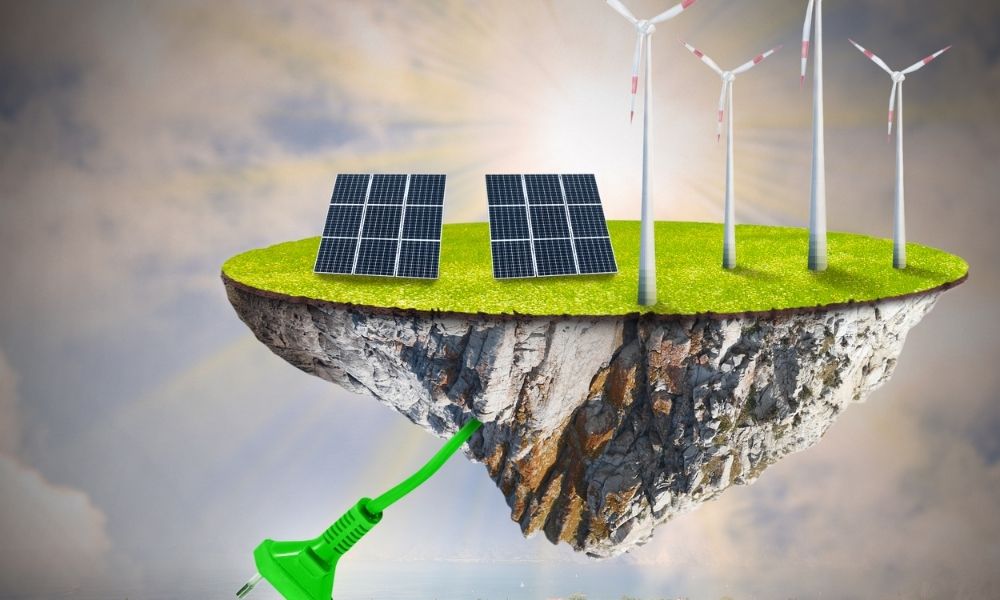Is a Complete Green Energy Transition Possible in Pakistan?
Ibn-e-Ameer
Is it time for Pakistan to go green? This has always been a matter of debate. However, no concrete action has been taken in this regard. There are just policies on paper.
The second question is whether Pakistan can afford to go green with its energy.
Maybe it isn’t the case.
Previous governments had set a goal of achieving a 30% renewable energy target by 2030.
At present, Pakistan produces 4 per cent renewable energy.
Meanwhile, the US has been pressuring Pakistan to switch to renewable energy.
This idea may be beneficial to countries such as the United States, India, and China, which have made extensive use of coal to generate electricity in order to boost their economies.
However, Pakistan has just started producing electricity from imported and indigenous coal.
Thar coal is a rich source of fuel that can produce electricity to meet local needs.
There had been discussions in the past that Pakistan had coal reserves equal to the oil reserves of Saudi Arabia that could meet the energy needs of Pakistan for the next fifty years.
Pakistan was able to explore and utilize thar coal reserves during the previous PML-N administration when work on CPEC was in full swing.
Pakistan is currently producing thar coal energy.
Should Pakistan withstand US pressure to produce green energy in such a scenario? The question is difficult to answer because producing green energy in Pakistan has been a major challenge.
Despite the boost in energy, China and India were still using coal in power plants. Even so, they were generating electricity with imported coal, which caused the price to skyrocket.
To avoid inflated bills for consumers, India and China had to shut down several coal-fired power plants due to rising coal prices.
Pakistan has two imported coal-based power plants set up under CPEC. In addition, Pakistan is producing electricity through indigenous coal in Thar Sindh.
CCoE approves IGCEP with a major focus on green energy in Pakistan
However, the US has been a vocal opponent of coal use in power plants around the world, including in Pakistan. It had also refused to grant funding to Pakistan for coal-based power plants.
It says that coal was a dirty fuel and therefore they could not extend financing.
Green energy in Pakistan
With its ailing economy, Pakistan cannot afford to produce green energy. Pakistan is still in the early stages of developing its economy, so it requires electricity from a variety of sources rather than focusing on renewable energy.
Second, Pakistan has little experience with generating electricity from renewable sources. Pakistan does not have advanced technology in setting up green energy plants.
Pakistan decided to build 900 MW solar energy power parks in Cholistan, Bahawalpur Punjab, during the PML-N government.
Solar power plants with a capacity of 300 megawatts were built by Chinese investors. However, the efficiency rate was too low and the tariff was higher.
As a result of the low efficiency and higher electricity rates, Nepra had to reduce its power tariffs.
In the auto sector, the PTI government has drafted an electric vehicle policy to encourage the establishment of electric vehicle manufacturing plants in Pakistan.
But no investors had come to Pakistan to set up manufacturing plants.
Should Pakistan compromise on the use of green energy in the national grid?
The renewable energy rates in Pakistan have been high due to low-efficiency rates. The distribution system of electricity in Pakistan had several flaws that led to higher theft rates.
In this scenario, Pakistan should continue to make efforts to produce green energy, but due to the country’s developing economy, a complete shift is impossible.
Pakistan needs electricity from all resources to meet the growing demand for electricity in the country.
At present, the country is facing the worst power outages despite setting up several power plants under CPEC.
There is a pressing need to address flaws in the current national grid, which result in massive amounts of electricity theft. The government needs to overhaul the distribution system to bring efficiency to cut losses.
The government should allow off-grid power projects in Pakistan.
Furthermore, existing distribution companies should be split into smaller ones to increase efficiency and reduce losses.
However, a major shift towards green energy is not possible in Pakistan.








